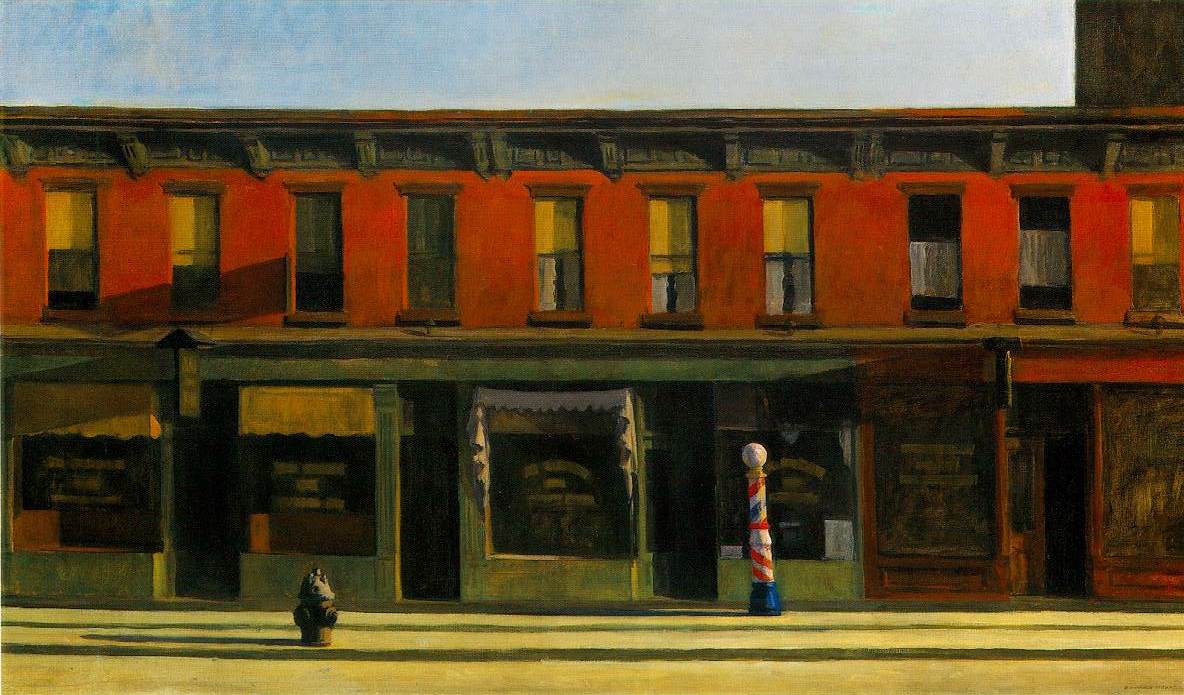I.
The dog and I begin our early morning walk. People must be away on holiday. The streets, usually quiet, are even more so today. We walk toward the center of the island, and all the five story structures, boarding houses in the 19th century but apartments and homes now that are incredibly expensive, give way to much taller buildings, warehouses and offices and other kinds of commercial activity, intermixed with new condo projects.
The streets are littered with the stuff of late night party goers, empty bottles, brochures, cigarette butts. Everywhere we hear the hum of airconditioners and air systems. There are fewer trees in the middle of the city, and I hear no birds chirping.
We walk past the avenues, finally reaching again the private Gramercy Park. It was a marsh in the early 19th century, drained by Samuel Ruggles, a developer who gave a key to each property owner around it. The park is beautifully manicured, with formal walks, planters and planting beds, sculptures and trees. We see a woman walking along the edge, a gray gravel path. We saw her last week, too.
The park is lined with a tall iron railing fence, but even that separation allows the beauty of the park on this square to spill out to us, softening the hard surfaces of dirty concrete.
II.
Edward Hopper has a fairly well-known painting called Early Sunday Morning. It's in the permanent collection of the Whitney Museum, and is a prime example of the loneliness he portrayed in almost all his paintings. In Hopper's world, a person is always an island. Light is more interesting than people.
In this painting, Hopper, notoriously introverted, celebrated solitude and aloneness. There is no sound, no people, no wind, only light on a row of shops. As if all life had been eliminated, all movement, all sound, all messy, noisy movement.
III.
The dog and I walk past the Theodore Roosevelt Birthplace Museum, a recreation of the townhouse in which he was born and grew up. I have not seen it before. Partner told me that it was shrouded in scaffolding recently, so I must have missed it before. The scaffolding is gone. The whole block is in deep shadow and the air is almost stifling.
It takes a strong imagination to think of this block as once lined in brownstone townhouses like this one. Someone told me that we should never think of these large family dwellings as "single family." In addition to grandparents, aunts and uncles, these houses also were home to servants, sometimes constituting their own family.
Tuesday, July 10, 2007
sunday morning
Posted by
Don
at
7/10/2007
![]()
Subscribe to:
Post Comments (Atom)


3 comments:
Gramercy Park. Wow.
One of my favorite hotels I'll never be able to afford is the Gramercy.
I have really been enjoying your stories of the city.
Shelley -- there was a funny comment on Gawker (I was looking for images of Gramercy Park) that quoted one of the people with a key to the park that hotel guests are not adequately locking the gates behind them. Evidentally, they were not worried so much about the hotel guests (who are paying several hundred dollars a night), but the "hordes" who might wander in.
There is something almost touchingly human (if not also a motivation for bloody revolutions) when people celebrate the elusive something that keeps them from being different from you or me.
By the way, I enjoyed your comments on Sicko, the movie. I've thought much about what you wrote.
Post a Comment